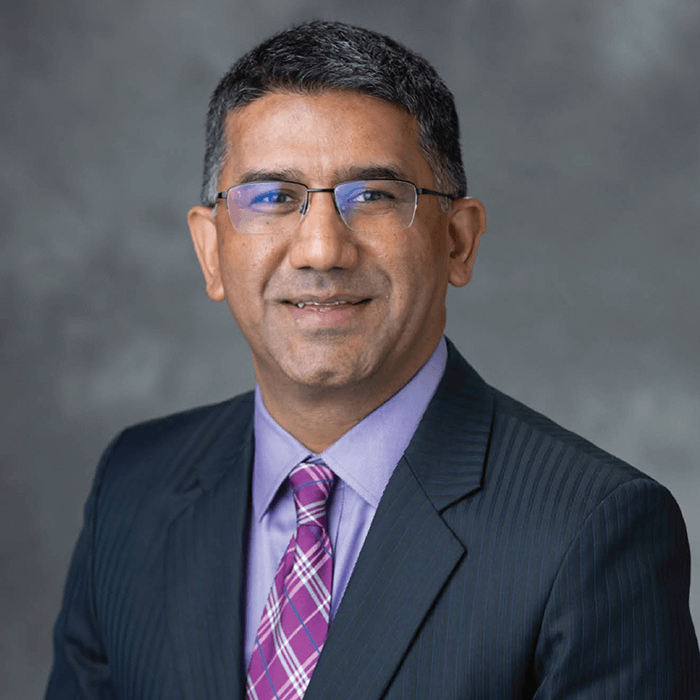
In 2013, Mary Miller, the Dean of Yale College, estimated that 99 percent of all art ever created is “lost to us forever” (1). Ravi D. Goel, ophthalmologist and collector from New Jersey, believes that historical documents are pieces of art – and that art should be made accessible to scholars around the world. Having donated 12 named collections to universities, including Yale and Harvard, Goel’s contribution to our understanding of key figures, such as James Joyce, has been invaluable. In this interview, Goel shares his initial inspiration for collecting documentation, how to balance outlets for passion with ophthalmic practice, and why art should be made accessible to all.
What inspired you to become an ophthalmologist?
I finished college in 1993 and the Clinton Healthcare Plan was all the rage in society – they were trying to push everyone into primary care. I went to a medical school that didn’t have an ophthalmology residency program, and so I always thought that ophthalmology was “in the other building” and not in the main medical school. I realized that ophthalmology was what I wanted to pursue because it is outpatient based, it combines medicine and surgery, and it is cutting edge – it is an inspiring field but you first have to know that it exists.
How did you get into collecting?
I have always been fascinated by colonial history. When I arrived at college in New Haven, I was overwhelmed by the architecture and history of the place. More specifically, I love learning about the relationship between Universities and US Presidents. A significant moment that piqued my interest occurred on a Sunday morning auction in Moorestown, New Jersey, back in 2003. There were around 40 dealers selling antiques and I came across a postcard collector. I asked if he had any postcards related to Yale and he gave me a binder of all his college postcards. I came across one signed by Edward A. Bouchet (2). Interestingly, Bouchet was, in 1874, believed to be the first African American student to attend Yale. I knew this because when I was a freshman at Yale, his portrait was put up in the library. A few years later, I bought a manuscript letter online written in 1851 and signed by Y Wing (3). I quickly realized that this “Y Wing” was in fact Yung Wing – the first Chinese student to attend college in the United States. Again, I knew this because his bust had recently been unveiled at Yale.
How did you obtain the James Joyce collection?
My friend, Heather Smith, has known for 15 years that I collect historical documents. When she was browsing the Slocum estate sale, she contacted me about a collection titled, “John Slocum’s ‘James Joyce’ Collection Correspondence.” After some research on John Slocum, known as one of the pre-eminent collectors of James Joyce, I decided to purchase the collection. It included a manuscript copy of Lucie Noël’s “James Joyce and Paul Léon: The Story of a Friendship.” Paul Léon was Joyce’s assistant and confidant until the 1940s when he was tragically captured and executed by the Nazis. His widow, Lucie Noël, kept a trunk of James Joyce documents that were later discovered by her son. The Slocum estate collection also included an English-translation manuscript of Stanislaus Joyce’s “Recollections of James Joyce By His Brother.”
Joyce famously suffered from several eye conditions – was this something that inspired you to purchase the Slocum collection?
It was actually pure coincidence. But, once I was interested in Joyce, his ophthalmic history became fascinating. I am interested in the development of his uveitis, glaucoma, and cataracts – he very probably had acute angle closure glaucoma. People thought he was nearsighted but he was probably far sighted – he had an onset of pain in his left eye which could be a combination of his uveitis and an acute angle closure attack. A junior resident could manage this with lasers and surgery nowadays, but obviously this technology wasn’t available a hundred years ago.
What inspires you to donate your collections?
I view historical documents as pieces of art and I believe that art should be accessible. Part of the joy in donating my collections to Universities and libraries is that scholars are able to access the documents from all around the world. Two days after posting the announcement that my collection of John J. Slocum Papers were at the Beinecke Library, I received an email from Ronan Crowley, the President Elect of the International James Joyce Foundation, inquiring about specific books mentioned in the letters. I knew then that digitizing my collection was worth it as it reached out to people, such as Crowley. My hope is that one day we can digitize all historical documents. By keeping them for myself, my collections would eventually become lost. The ultimate goal is seeing a document that you have donated being quoted in a book or an article.
Is there any specific connection between ophthalmology and collecting?
The former CEO of the American Academy of Ophthalmology, David Parke, collects maps – but Bill Gross, the co-founder of PIMCO, collects stamps and David Richards, a real estate partner at McCarter & English, has amassed the largest collection of Rudyard Kipling works. My point is that I think all individuals need an outlet for their passion – whether that’s maps, stamps, or historical documents. Once you have a passion or an interest, it sustains you and provides joy. I have tried mimicking the collecting pursuits of others, but they simply don’t sustain me. Unsurprisingly, it is important to find what interests you.
References
- Yale News, “‘A welcome to Yale College’ by Dean Mary Miller” (2017). Available at: bit.ly/3FpNGnt.
- Yale University Library, “Ravi D. Goel collection on Yale”. Available at: bit.ly/3IX0MsZ.
- Yale University Library, “Ravi D. Goel collection on Yale”. Available at: bit.ly/3yjUtuG.
